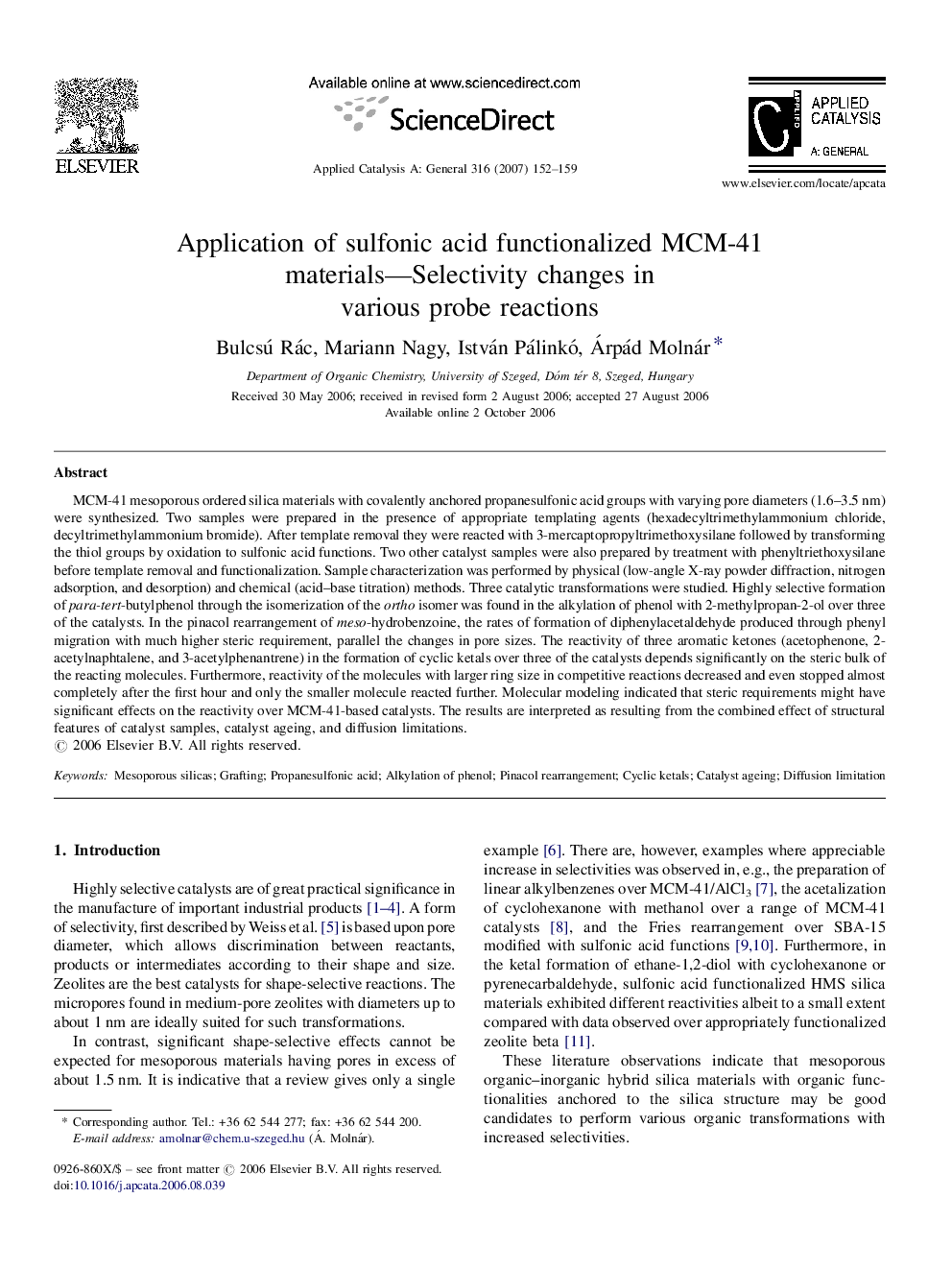| کد مقاله | کد نشریه | سال انتشار | مقاله انگلیسی | نسخه تمام متن |
|---|---|---|---|---|
| 43821 | 45990 | 2007 | 8 صفحه PDF | دانلود رایگان |

MCM-41 mesoporous ordered silica materials with covalently anchored propanesulfonic acid groups with varying pore diameters (1.6–3.5 nm) were synthesized. Two samples were prepared in the presence of appropriate templating agents (hexadecyltrimethylammonium chloride, decyltrimethylammonium bromide). After template removal they were reacted with 3-mercaptopropyltrimethoxysilane followed by transforming the thiol groups by oxidation to sulfonic acid functions. Two other catalyst samples were also prepared by treatment with phenyltriethoxysilane before template removal and functionalization. Sample characterization was performed by physical (low-angle X-ray powder diffraction, nitrogen adsorption, and desorption) and chemical (acid–base titration) methods. Three catalytic transformations were studied. Highly selective formation of para-tert-butylphenol through the isomerization of the ortho isomer was found in the alkylation of phenol with 2-methylpropan-2-ol over three of the catalysts. In the pinacol rearrangement of meso-hydrobenzoine, the rates of formation of diphenylacetaldehyde produced through phenyl migration with much higher steric requirement, parallel the changes in pore sizes. The reactivity of three aromatic ketones (acetophenone, 2-acetylnaphtalene, and 3-acetylphenantrene) in the formation of cyclic ketals over three of the catalysts depends significantly on the steric bulk of the reacting molecules. Furthermore, reactivity of the molecules with larger ring size in competitive reactions decreased and even stopped almost completely after the first hour and only the smaller molecule reacted further. Molecular modeling indicated that steric requirements might have significant effects on the reactivity over MCM-41-based catalysts. The results are interpreted as resulting from the combined effect of structural features of catalyst samples, catalyst ageing, and diffusion limitations.
Steric congestion in the channels of functionalized MCM-41 shown by molecular modeling, diffusion limitations, and catalyst ageing result in high selectivity and significant differences in reactivity in catalytic transformations. Figure optionsDownload as PowerPoint slide
Journal: Applied Catalysis A: General - Volume 316, Issue 2, 10 January 2007, Pages 152–159